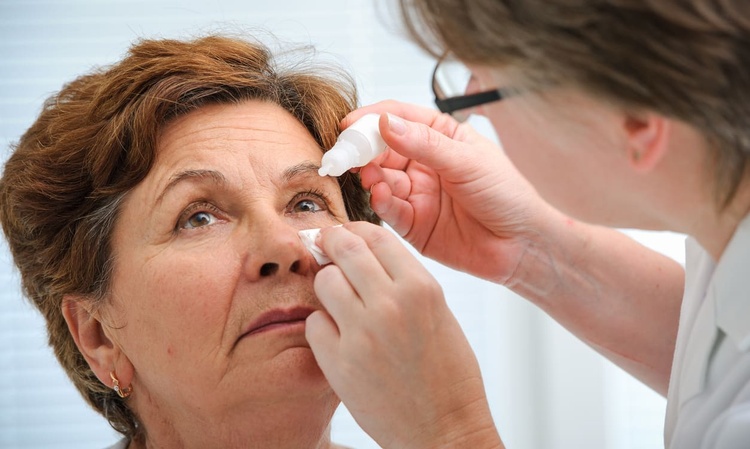Tinnitus Guide: Treatment and Prevention
Ringing in the ears (tinnitus aurium, or tinnitus for short) can also have many other causes. Only very rarely are they a sign of a serious illness. Sometimes tinnitus occurs for no apparent reason at all—in these cases, it usually lasts no longer than a minute.For some people, however, the ringing in the ears persists for a longer period of time. If it persists for more than three months, it is referred to as chronic tinnitus. The symptoms are usually mild: While annoying, it is manageable. For some sufferers, however, the ringing in the ears is so intense that it significantly impacts daily life and quality of life. It can lead to constant tension, disrupt concentration, and disrupt sleep .

Living with persistent ear sounds can be frustrating and overwhelming. The phantom noises associated with this condition often interfere with daily activities, sleep patterns, and overall well-being. While there is currently no universal cure, numerous treatment approaches and preventive measures can provide significant relief and help individuals regain control over their auditory experience.
What Causes Buzzing in the Ears
The underlying causes of this auditory condition vary widely, ranging from simple earwax buildup to more complex neurological issues. Common triggers include prolonged exposure to loud noises, certain medications, ear infections, age-related hearing loss, and underlying health conditions such as high blood pressure or temporomandibular joint disorders. Identifying the root cause is crucial for developing an effective treatment strategy, as different origins may require distinct therapeutic approaches.
Medical Treatment Options Available
Healthcare professionals offer various medical interventions depending on the underlying cause and severity of symptoms. Sound therapy devices can help mask the phantom sounds, while hearing aids may benefit those with concurrent hearing loss. Certain medications, including antidepressants and anti-anxiety drugs, have shown effectiveness in managing severe cases. Cognitive behavioral therapy has also proven valuable in helping patients develop coping strategies and reduce the psychological impact of persistent ear sounds.
What to Do About Tinnitus at Home
Several self-management techniques can complement professional treatment and provide daily relief. Creating a sound-rich environment using white noise machines, fans, or soft background music can help mask the phantom sounds. Stress reduction techniques such as meditation, deep breathing exercises, and regular physical activity often lead to symptom improvement. Avoiding caffeine, alcohol, and nicotine may also reduce symptom intensity, as these substances can worsen the condition in some individuals.
Prevention Strategies and Lifestyle Changes
Preventing the onset or worsening of this condition involves protecting your hearing and maintaining overall ear health. Using ear protection in noisy environments, keeping the volume at safe levels when using headphones, and avoiding cotton swabs for ear cleaning are essential preventive measures. Regular exercise, adequate sleep, and stress management contribute to overall ear health and may reduce the risk of developing auditory symptoms.
Professional Treatment Costs and Provider Options
Treatment costs vary significantly depending on the chosen approach and healthcare provider. Initial consultations with audiologists typically range from $200 to $400, while comprehensive hearing evaluations may cost between $300 to $600. Ongoing therapy sessions and specialized treatments can add to the overall expense.
| Treatment Type | Provider | Cost Estimation |
|---|---|---|
| Initial Consultation | ENT Specialist | $250 - $450 |
| Hearing Aid Fitting | Audiologist | $1,500 - $4,000 |
| Sound Therapy Device | Hearing Centers | $300 - $800 |
| Cognitive Behavioral Therapy | Licensed Therapist | $100 - $200 per session |
| Medication Management | Primary Care Physician | $50 - $150 per visit |
Prices, rates, or cost estimates mentioned in this article are based on the latest available information but may change over time. Independent research is advised before making financial decisions.
Long-term Management and Support
Successful long-term management often requires a combination of professional treatment and personal lifestyle adjustments. Support groups, both online and in-person, provide valuable emotional support and practical advice from others experiencing similar challenges. Regular follow-up appointments with healthcare providers ensure that treatment plans remain effective and can be adjusted as needed. Many individuals find that their symptoms become more manageable over time as they develop effective coping strategies and receive appropriate treatment.
Managing persistent ear sounds requires patience, persistence, and often a multifaceted approach combining medical treatment with lifestyle modifications. While the condition can be challenging, numerous effective treatment options and prevention strategies are available to help individuals reduce their symptoms and improve their quality of life. Working closely with qualified healthcare professionals and implementing appropriate self-management techniques can lead to significant improvement in daily functioning and overall well-being.
This article is for informational purposes only and should not be considered medical advice. Please consult a qualified healthcare professional for personalized guidance and treatment.




